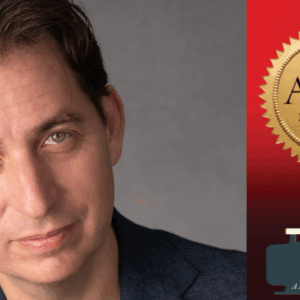
The Timeless Appeal of an American (Library) in Paris
On the Literary Romance of the City of Lights
Literary pilgrims to Paris, however ardent, tend toward crises of faith. A whole genre has flowed from the deflated hopes of writers who once believed the muse to be Gallic, living in a garret, and partial to Americans abroad. Of course, American writers don’t have a monopoly on disappointment about Paris. Tourists from around the world complain about the rude shock—now dubbed “Paris Syndrome”—of their fantasies crashing into the city’s prosaic reality. It’s a lesson in the perils of idealization.
For those of us who live in the French capital, it’s more complicated, as are most long-term relationships. I regularly cycle through devotion and disillusionment, witnessing how the city’s beauty and the ugly commodification of that beauty coexist, how its idyllic myths mingle with its sometimes bloody history. I’ve also come to see how the city is like any other, with the same simmering cultural tensions and socioeconomic issues as any metropolis.
Looking back, I’m sheepish to admit just how fervent my own Parisian dreams once were. As a girl growing up in Texas, I became—quite mysteriously to the Texans around me—a Francophile. I ate up stories of the Lost Generation and swooned thinking about bohemians lounging on café banquettes, waving cigarettes, and arguing about ideas. I read everything by Henry Miller and Anaïs Nin, believing their entwined literary and romantic relationship to be the apotheosis of seduction. Teenage years in Texas seemed painfully banal in comparison. Bygone writers had Parisian bacchanals; we got keg parties in the woods. The injustice tasted more bitter than the flat Shiner Bock on tap.
When I finally traveled to Paris on my own, I sought to right the wrong, not that I expected to find any modern bacchanals. I was content to chase the ghosts of the writers I loved against a picturesque backdrop. I checked into a dank hotel as close as I could get to Shakespeare and Company and mapped out my course to all the famous cafés where writers had once gathered. On my first night, I wandered shyly into a café and ordered a glass of white wine, blushing furiously at being alone and mumbling in a language I had only practiced in an air-conditioned classroom. The harried waitress in shirtsleeves and black suspenders set down my glass with such force that it shattered, sending wine and tiny shards of glass across the tabletop and into my lap. She blithely mopped up the mess without apology. I imagined she was disgusted with me and my Americanness and my solitude. Gertrude Stein wouldn’t have giggled nervously and then left a large tip.
By the time I moved to Paris, many years later, most of my romantic notions of the city had been swept away like those shards onto the sidewalk. The move, for my husband’s job, was practical rather than whimsical. And my status as “trailing spouse” threatened to extinguish any remaining flicker of glamour. The ugly term encapsulates the privileges and limitations inherent in the status: according to the state, the partner who follows is legitimate but secondary. Another applicable but contentious word, “expat”, so evocative of Americans in Paris, loses its sheen when one examines the difference between an expatriate and an immigrant. The gap is filled with questions of agency, means, and access to resources in one’s host country.
By the time I moved to Paris . . . most of my romantic notions of the city had been swept away like those shards onto the sidewalk.
After a few months acclimating to life in Paris as a resident, I found a job as a reference librarian at the American Library in Paris, an institution established in 1920 which serves a diverse population hailing from over 60 countries. As part of my training, my coworkers joyfully produced artifacts and anecdotes from the library’s long history. I was shown Ernest Hemingway and Gertrude Stein’s book reviews in the library’s newsletter and heard about Stein arguing with Alice B. Toklas in the stacks. Pulling volume after volume down from the shelves in the special collection, I saw books donated to the library from Sylvia Beach, Willa Cather, Janet Flanner, and Irwin Shaw. One colleague opened a cream folder to show me a letter from Henry Miller, dated November 21st, 1938, asking if the library had The Secret Doctrine by Madame Blavatsky, The Tibetan Book of the Dead, an English translation of Seraphina, Walt Whitman’s prose works, and “any book on Zen Buddhism.” Holding the piece of stationery with its jaunty Art Deco letterhead—“Henry Miller 18 Villa Seurat Paris”—I felt a jolt of exultation for my younger, more idealistic self.
Over time, as I learned more about the American Library and its place in the history of literary Paris, I recovered some long-repudiated belief in the city’s magnetic pull and inspirational force. Conjuring scenes of my old heroes in the library’s reading rooms made me swoon all over again, decades after their work first moved me. However, the most thrilling thing was not the library’s function as a monument to the past. Rather, it was the lively thrum of its present activity. Clearly not only ghosts walked here. Writers, readers, students, and scholars converged daily upon the place.
Writers don’t need smoky cafés or any other clichés of the writerly life, but they do need a comfortable space to write. They need access to books. They need quiet. And, perhaps surprisingly, they need community, just like the rest of us who might be floundering in a new city.
I recently became the director of the American Library, and I hear stories from people all over the world—“trailing spouses”, “expats”, immigrants, and Parisians alike—about what the library means to them. Again and again, the need for sanctuary in this beautiful but sometimes alienating city emerges. I hear familiar tales of disillusionment, and then reconciliation, with Paris after people discover the library. Some speak of forging deep friendships in book groups. Others remember carrying home teetering stacks of books to read to their children who are now grown. Many tell me about the experience of writing books here, comforted by the silence of the reading room and the company of others.
These stories remind me of the potential of any library to be a refuge for its public. Romantic notions of artistic communion pale in comparison to what libraries regularly do. Yes, libraries protect history, but they also safeguard the future by providing spaces dedicated to people learning and creating. Stalwart, they serve communities unbeholden to any fleeting cultural moment.
At the American Library, the rate of book borrowing is up, across genres and in every age group. The children’s area fills up during every Story Time. Literature-loving teenagers flock to Friday night festivities. Crowds congregate for evening author talks. Lapsed readers fall in love with books again as they wander the stacks, reminded, in a very tangible way, of the breadth of human knowledge.
And that’s more exhilarating than any bohemian bacchanal.
Audrey Chapuis
Audrey has worked in libraries for close to 20 years, including posts at Widener Library in the Harvard College Library system and the Pritzker Legal Research Center at the Northwestern University School of Law, where she was head of the Access Services department. At the American Library in Paris, she served as Deputy Director, Assistant Director of Institutional Advancement, and Reference and Collections Librarian.



















